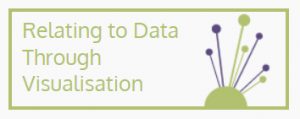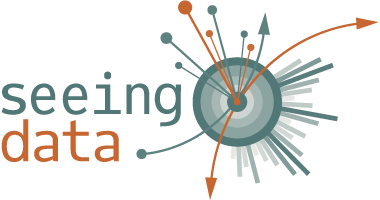Reflections from a fledging PhD student
 I am in week four of a three year PhD exploring how diverse users engage with and draw meanings from data visualisations. My project forms part of the ‘Relating to Data’ network which I joined in October after completing a masters in social research. Although I am coming at this project with a sociological background I am new to the social study of data visualisations. Having successfully avoided drawing a bar chart or histogram since GCSE maths, I’m also uncertain of my own data literacy or how I will make sense of the data visualisations I encounter.
I am in week four of a three year PhD exploring how diverse users engage with and draw meanings from data visualisations. My project forms part of the ‘Relating to Data’ network which I joined in October after completing a masters in social research. Although I am coming at this project with a sociological background I am new to the social study of data visualisations. Having successfully avoided drawing a bar chart or histogram since GCSE maths, I’m also uncertain of my own data literacy or how I will make sense of the data visualisations I encounter.
So what better way to kick off the project than attending the one day conference ‘Culture and Politics of Data Visualisation,’ held at Sheffield University earlier this month. Organised by Helen Kennedy, on the back of the success of ‘Seeing Data,’ this conference and exhibition brought together social scientists and data visualisation designers. With twenty five speakers the conference covered a wide range of theoretical, empirical and design based responses to the cultural, social and political work done through data visualisations. Topics included data visualisation conventions, the use of social media network visualisations in social research, cultural mapping, infographic design and campaigners’ use of data visualisations during the EU referendum. In fact, the wide ranging topics covered by academics and designers led attendees to ponder how researchers should be approaching such a broad field of study, leading to some discussion as to whether there is a need to establish data visualisation genres and sub-fields for research. I am interested to see how this field evolves over the course of the next three years.
It was impossible to attend all twenty five talks, however listening to thirteen of the speakers present their varied research has helped me formulate questions which I hope to explore within and alongside my PhD project. No more so than the first keynote speaker Catherine D’Ignazio from the MIT Center for Civic Media and Emerson Engagement Lab, USA. D’Ignazio presented her ideas for a feminist approach to data visualisation which challenges the notion that data visualisations can provide “a view from nowhere.” In doing so, D’Ignazio talked about how taking a feminist approach allows us to recognise the importance of situated knowledge and context in the formation of data visualisations. Describing how a feminist paradigm also invites us to bring the body back into focus, D’Ignazio talked about the labour of the various actors involved in the creation of data visualisations but also users’ embodied emotive and affective responses to them. I also found her ideas for how we might explore ways in which people could talk back to data visualisations really exciting. This might be through collaborative approaches to design or the ability for users to add additional information, but importantly it would allow data visualisations to provide a more pluralistic view, facilitated through user engagement.
As I work with my supervisors Dave Beer and Rosey Hill to plan how to take my PhD project forward I am reflecting on questions such as: what counts as a data visualisation? What happens to user engagement if we break the data visualisation conventions identified in ‘Seeing Data?’ And what methods might allow users to respond to data visualisations, so as to engage in a form of dialogue with the data? As I investigate user engagement with data visualisations over the months and years ahead I aim to keep these questions in mind.
